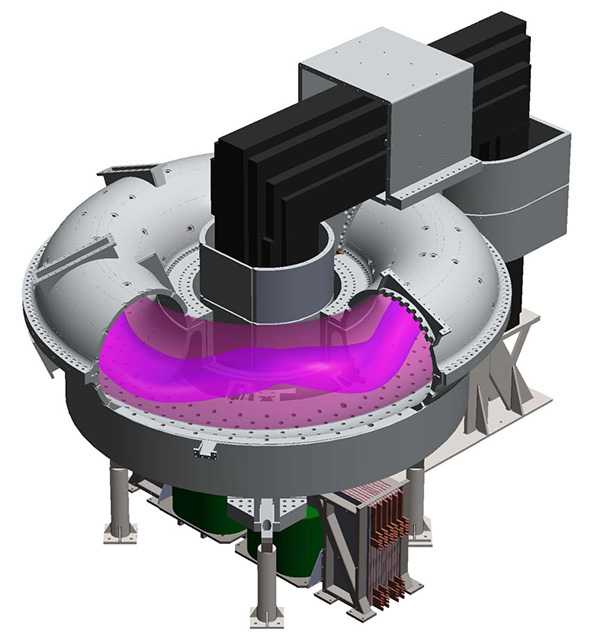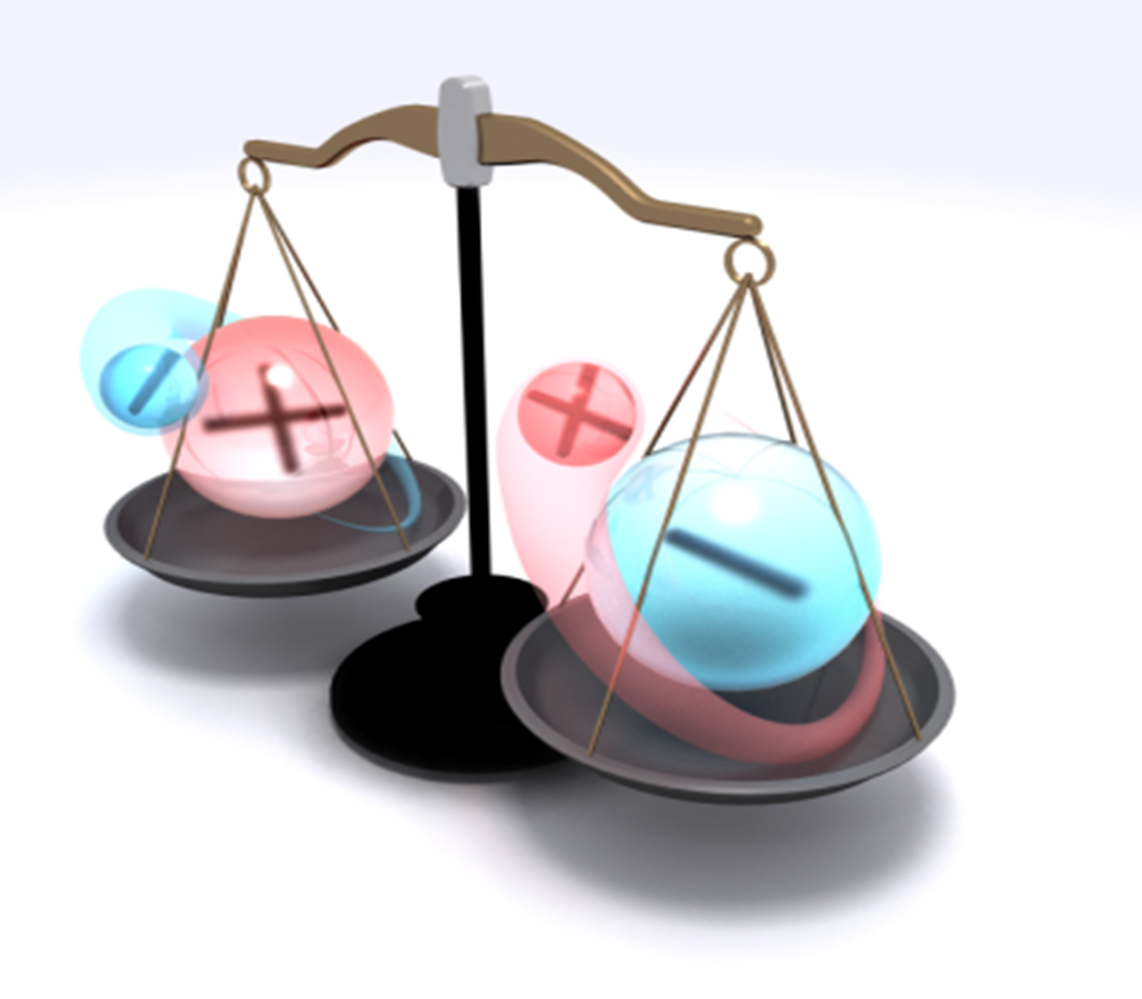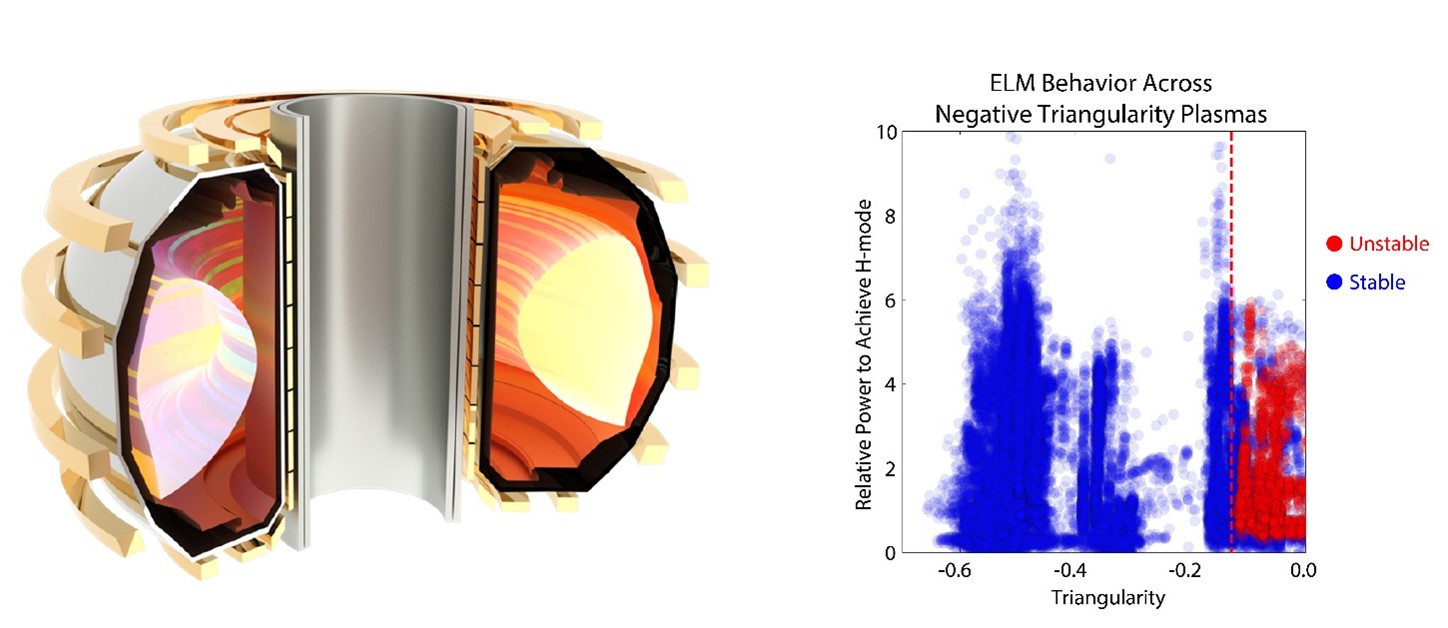A New Twist on the Magnetic Equilibrium of a Toroidal Plasma
The reversed field pinch’s helical state reveals nonlinear physics of plasma self-organization.

The Science
A new behavior in the reversed field pinch of the Madison Symmetric Torus Experiment whereby the plasma spontaneously attains a 3D helical equilibrium leads to improved understanding and performance of magnetically confined fusion plasmas, in particular the reversed field pinch magnetic configuration.
The Impact
The helical equilibrium observed in the reversed field pinch is the result of the plasma’s self-organization to a low-energy state that has a surprising 3D character. The reduced turbulence associated with this state holds promise to improve the quality of energy confinement, a key to obtaining burning plasmas.
Summary
3D physics plays a critical role in nominally axisymmetric toroidal magnetic fusion devices such as the tokamak and the reversed field pinch. It takes great effort to make such a device perfectly axisymmetric so that the toroidal coordinate is ignorable, making the plasma effectively 2D. The stellarator configuration is a counter example where a 3D helical magnetic field is produced on purpose using twisted magnets surrounding the plasma. Making a 3D field with high quality plasma confinement characteristics is yet more challenging. In the reversed field pinch, a new behavior has been discovered recently whereby the plasma spontaneously attains a 3D helical equilibrium. The core of the plasma is helical, much like the plasma in a stellarator, but the boundary remains nominally axisymmetric. One aspect of this helical state is that magnetic turbulence is reduced, presumably an impact of the large helical structure on other possible helical motion of the plasma. The confinement quality of these plasmas is therefore improved, leading to enhanced understanding and performance of the reversed field pinch magnetic configuration. This work was performed as a collaboration between groups at the University of Wisconsin-Madison, UCLA, and a team of scientists from Padua, Italy where another reversed field pinch experiment called RFX-Mod is located.
Contact
Dr. David Brower
UCLA
brower@mail.utexas.edu
Dr. John Sarff
University of Wisconsin-Madison
jssarff@wisc.edu
Funding
DOE Office of Science, Office of Fusion Energy Sciences
Publications
W.F. Bergerson et al. “Bifurcation to 3D helical magnetic equilibrium in an axisymmetric toroidal device.” 2011. Phys. Rev. Lett. 107: 255001
Related Links
http://plasma.physics.wisc.edu/viewpage.php?id=mst
http://www.igi.cnr.it/www/?q=content/reversed-field-pinch-rfp-configuration-and-dynamo-process
Highlight Categories
Program: FES
Performer: University
Additional: Collaborations , International Collaboration



